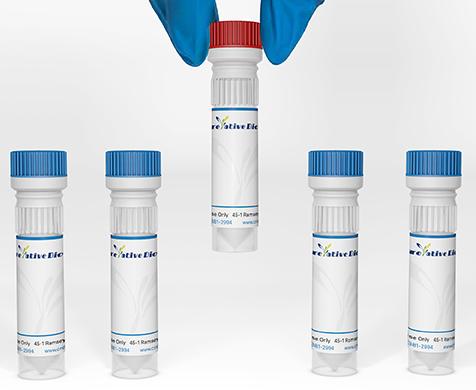This gene encodes a glycoprotein involved in the regulation of the complement cascade. Binding of the encoded protein to complement proteins accelerates their decay, thereby disrupting the cascade and preventing damage to host cells. Antigens present on this protein constitute the Cromer blood group system (CROM). Alternative splicing results in multiple transcript variants. The predominant transcript variant encodes a membrane-bound protein, but alternatively spliced transcripts may produce soluble proteins.
Full Name
CD55 molecule (Cromer blood group)
Function
This protein recognizes C4b and C3b fragments that condense with cell-surface hydroxyl or amino groups when nascent C4b and C3b are locally generated during C4 and c3 activation. Interaction of daf with cell-associated C4b and C3b polypeptides interferes with their ability to catalyze the conversion of C2 and factor B to enzymatically active C2a and Bb and thereby prevents the formation of C4b2a and C3bBb, the amplification convertases of the complement cascade (PubMed:7525274).
Inhibits complement activation by destabilizing and preventing the formation of C3 and C5 convertases, which prevents complement damage (PubMed:28657829).
(Microbial infection) Acts as a receptor for Coxsackievirus A21, coxsackieviruses B1, B3 and B5.
(Microbial infection) Acts as a receptor for Human enterovirus 70 and D68 (Probable).
(Microbial infection) Acts as a receptor for Human echoviruses 6, 7, 11, 12, 20 and 21.
Biological Process
Complement activation, classical pathway
Innate immune response
Negative regulation of complement activation
Positive regulation of CD4-positive, alpha-beta T cell activation
Positive regulation of CD4-positive, alpha-beta T cell proliferation
Positive regulation of cytosolic calcium ion concentration
Positive regulation of T cell cytokine production
Regulation of complement activation
Regulation of complement-dependent cytotoxicity
Regulation of lipopolysaccharide-mediated signaling pathway
Respiratory burst
Cellular Location
Isoform 1
Cell membrane ; Single-pass type I membrane protein
Isoform 2
Cell membrane ; Lipid-anchor, GPI-anchor
Isoform 3
Secreted
Isoform 4
Secreted
Isoform 5
Secreted
Isoform 6
Cell membrane
Isoform 7
Cell membrane
Involvement in disease
Complement hyperactivation, angiopathic thrombosis, and protein-losing enteropathy (CHAPLE):
An autosomal recessive disease characterized by abdominal pain and diarrhea, primary intestinal lymphangiectasia, edema due to hypoproteinemia, malabsorption, and less frequently, bowel inflammation, recurrent infections, and angiopathic thromboembolic disease. Patients' T lymphocytes show increased complement activation causing surface deposition of complement and the generation of soluble C5a.
PTM
The Ser/Thr-rich domain is heavily O-glycosylated.














